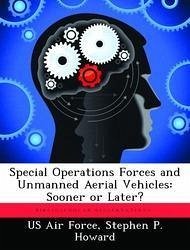
Special Operations Forces and Unmanned Aerial Vehicles: Sooner or Later?
Versandkostenfrei!
Versandfertig in über 4 Wochen
53,99 €
inkl. MwSt.

PAYBACK Punkte
27 °P sammeln!
This study analyzes whether special operations forces (SOF) should use unmanned aerial vehicles (UAV) to support intelligence, surveillance, reconnaissance, communications, and resupply capability deficiencies. The author's objective is to review the missions and requirements of the United States Special Operations Command, examine current and future unmanned aerial vehicle technologies, and analyze whether unmanned aircraft technologies are mature enough to meet the demanding special operations mission. The result of the analysis is that unmanned aerial vehicles have tremendous potential. But...
This study analyzes whether special operations forces (SOF) should use unmanned aerial vehicles (UAV) to support intelligence, surveillance, reconnaissance, communications, and resupply capability deficiencies. The author's objective is to review the missions and requirements of the United States Special Operations Command, examine current and future unmanned aerial vehicle technologies, and analyze whether unmanned aircraft technologies are mature enough to meet the demanding special operations mission. The result of the analysis is that unmanned aerial vehicles have tremendous potential. But, due to the technological limitations and a lack of systems maturity, unmanned aerial vehicles lack the range, reliability, datalink capability, and size to meet SOF needs at this time. However, in the future, UAVs should be able to fulfill several SOF capability deficiencies.


